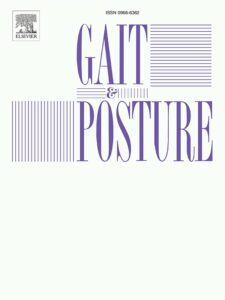Publications

Relationship between natural muscle oscillation frequency and lower limb muscle performance during instrumented sit-to-stand and stand-to-sit movements on a novel device in sedentary subjects
Authors: Maximiliano Torres-Banduc 1, 2, Daniel Jerez-Mayorga 1, 3, Luis Chirosa-Rios 1, Paula Plaza 3, Ignacio Chirosa-Rios 1
Affiliations:
- Department of Physical Education and Sports. Faculty of Sports Sciences, University of Granada, Granada, Spain
- Escuela de Kinesiologia, Facultad de Ciencias de la Salud, Universidad de Las Americas, Vina Del Mar, Chile
- Exercise and Rehabilitation Sciences Institute, School of Physical Therapy, Faculty of Rehabilitation Sciences, Universidad Andres Bello, Santiago, Chile
Journal: Gait & Posture - July 2024, Volume 112, Pages 40-45 (DOI: 10.1016/j.gaitpost.2024.05.004)
-
Field & Applications:
- Muscle development / Performance
- Occupational Healthcare
- Musculoskeletal health
Background: Despite the significance of muscle oscillation frequency, previous research has not established a correlation with muscle performance due to the challenges of applying resistance without altering natural motion during functional tests.
Research question: What is the correlation between muscle oscillation frequency and lower limb muscle strength, power, and work during an instrumented sit-to-stand and stand-to- sit (iSTS-TS) task among sedentary subjects?
Methods: In a cross-sectional study, the oscillation frequency of the gastrocnemius medialis (GM), biceps femoralis (BF), and vastus medialis (VM) muscles in both the dominant (D) and non-dominant (ND) legs was assessed with a handheld myotonometer in 34 sedentary individuals before performing the iSTS-TS task.
Results: In the isokinetic mode, no significant correlations were found. In the isotonic mode, the BF muscle oscillation frequency in the D and ND legs exhibited significant positive correlations with peak force, peak power, and work during sitting down, as well as peak power and work during standing up. Positive correlations were observed in both legs between the GM oscillation frequency and sitting down peak force and work. Additionally, significant positive correlation was found with standing up work in the D leg. Muscle oscillation frequency of the VM exhibited a positive correlation with sitting down peak force in the ND leg.
Significance: Due to a greater number of correlations found, it is advisable to use the isotonic mode when assessing muscle oscillation frequency in relation to muscle performance during functional iSTS-TS tasks in sedentary subjects.
Keywords: sit-to-stand, muscle tone, muscle strength dynamometer
This investigation revealed that sedentary individuals display positive correlations between muscle oscillation frequency and muscle performance variables, with stronger and exclusive associations observed in isotonic mode. From a practical standpoint, it is advisable to use the isotonic mode when assessing muscle oscillation frequency in relation to muscle performance during functional Sit-to-Stand and Stand-to-Sit tasks in sedentary subjects. Future research should provide information on causation between the variables reported in this study.


